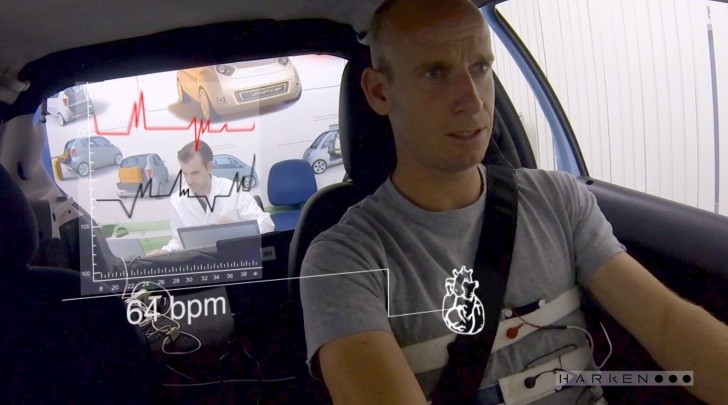Everyone knows Mercedes-Benz luxury models come with more driver monitoring sensors than a hospital. Which is nice, but what do you do with the other 400,000 drivers that can’t afford an S Class and crash because of drowsiness?
Yeah, it’s funny how people now need sensors to tell them they need to take a brake because they are fatigued, but the fact is a lot of people continue to drive fatigued for long period of times, risking a serious crash.
Different companies are trying to come up with driver monitoring technologies that can be implemented in standard cars and the HARKEN project is one of the most interesting ones out there.
If you can’t tell you’re fatigued behind the wheel when your attention is easily distracted by a billboard or you’re looking into the void, HARKEN will notify you to stop and take a break.
How it works? Well, it will have only two sensors and a central processing unit, neatly integrated in the vehicle’s cabin. And since the name of the project stands for “heart and respiration in-car embedded non intrusive sensors”, all the hardware will be hidden from eyesight.
To be more specific, the seatbelt itself will contain a sensor that monitors the driver’s heart rate, while the seat’s fabric will measure his respiratory rate. Using previously stored data, the central processing unit located under the seat will filter out disturbing factors such as vehicle and/or driver movement to keep false alarms to a minimum.
If the two measured parameters drop in value too much, the system will notify the driver via tactile and/or auditive signals to stop and take a break. The team working on HARKEN said closed track testing ended with positive results, following to start testing it in real-world conditions soon.
Different companies are trying to come up with driver monitoring technologies that can be implemented in standard cars and the HARKEN project is one of the most interesting ones out there.
If you can’t tell you’re fatigued behind the wheel when your attention is easily distracted by a billboard or you’re looking into the void, HARKEN will notify you to stop and take a break.
How it works? Well, it will have only two sensors and a central processing unit, neatly integrated in the vehicle’s cabin. And since the name of the project stands for “heart and respiration in-car embedded non intrusive sensors”, all the hardware will be hidden from eyesight.
To be more specific, the seatbelt itself will contain a sensor that monitors the driver’s heart rate, while the seat’s fabric will measure his respiratory rate. Using previously stored data, the central processing unit located under the seat will filter out disturbing factors such as vehicle and/or driver movement to keep false alarms to a minimum.
If the two measured parameters drop in value too much, the system will notify the driver via tactile and/or auditive signals to stop and take a break. The team working on HARKEN said closed track testing ended with positive results, following to start testing it in real-world conditions soon.

